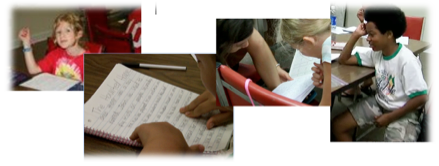Module 18
The concepts of applied linguistics will be explored, and include phonology, principles of English language in reading, writing, speaking and listening; sociolinguistics, language acquisition, and second language acquisition. Consistent use of reading and writing strategy across all content areas continues to turn around the language skills of English language learners, particularly those who struggle. Participants will finish this course with a compendium of strategies, resources, and tools to aid ELLs and struggling learners with, using researched and field-tested implementation materials. In addition, they will practice with application of these strategies in their classrooms, to return and reflect on them in learning forums. Planning and preparation will involve comprehensive lesson and unit development.
Course Outcomes:
- Demonstrate competency in language and understanding of language as a sequential and organized system of communication.
- Apply common, grade appropriate strategy ideas across all content areas to leverage ELL student success with.
- Collect and apply multiple strategies to aid in the successful literacy effort of struggling learners and ELLs.
- Collaborate among multiple disciplines in order to better accommodate the needs of struggling learners.
- Discuss the research behind effective strategies that teach language conventions.
- Prepare and practice with strategies that teach language conventions.
- Apply, through design and redesign of curriculum, knowledge of phonology, morphology, pragmatics, syntax in support of reading, writing, listening, and speaking.
- Use knowledge of rhetorical and discourse structures to develop language and literacy skills among ELLs.
- Apply knowledge of sociocultural, sociopolitical, and psychological variables that facilitate academic achievement among ELLs.
- Appraise and plan with understanding of the role and relevance of ELLs’ home languages, and use this understanding to differentiate.
- Give examples of, and apply, theories of second language reading and writing development at varying levels of proficiency.
- Discriminate among L1 and L2 literacy and language development.
- Generalize the principles behind phonology, morphology, semantics, syntax, and discourse in literacy development.
Section outline
-
Module 18
Diversity in the Learning Styles of ELLs

-
Students in Chris DiFulvio and Chris Leins’ eighth-grade classroom in Homer, NY work together to complete a Frayer Model to learn new vocabulary in the complex non-fiction text, Unbroken, by Laura Hillenbrand.
-
Jessica Kauffman's sixth-grade class at Tapestry Charter School in Buffalo, NY, learns general academic vocabulary and scientific vocabulary in order to conduct a science experiment.
-
The Supporting English Language Learners guidance document provides a high level overview of our system for supports for English language learners, including cultural and linguistic supports. Includes details on our use of the California English Language Development standards (ELD), and details about "language dives" and "conversation cues."
Expeditionary Learning (EL), 2019